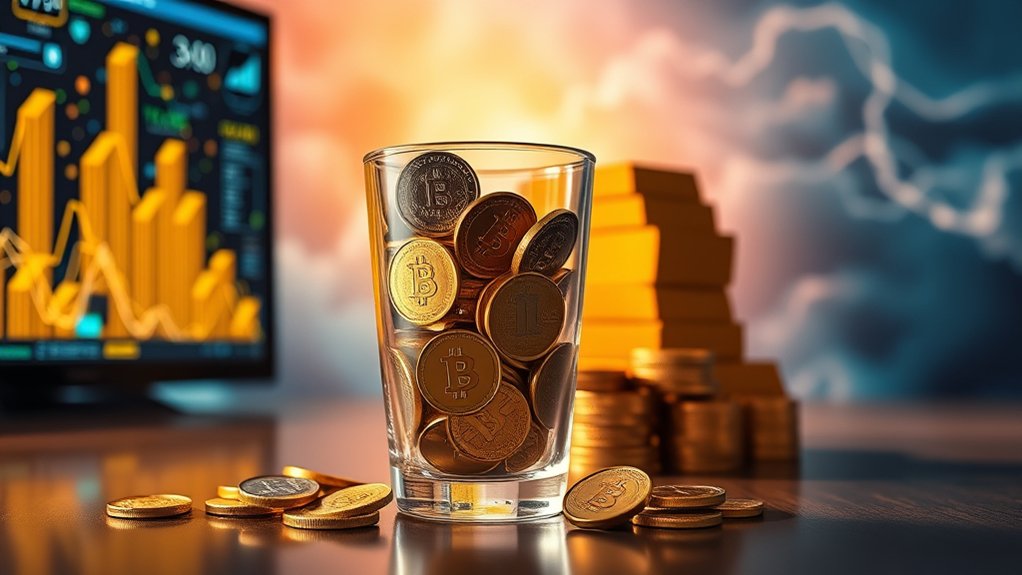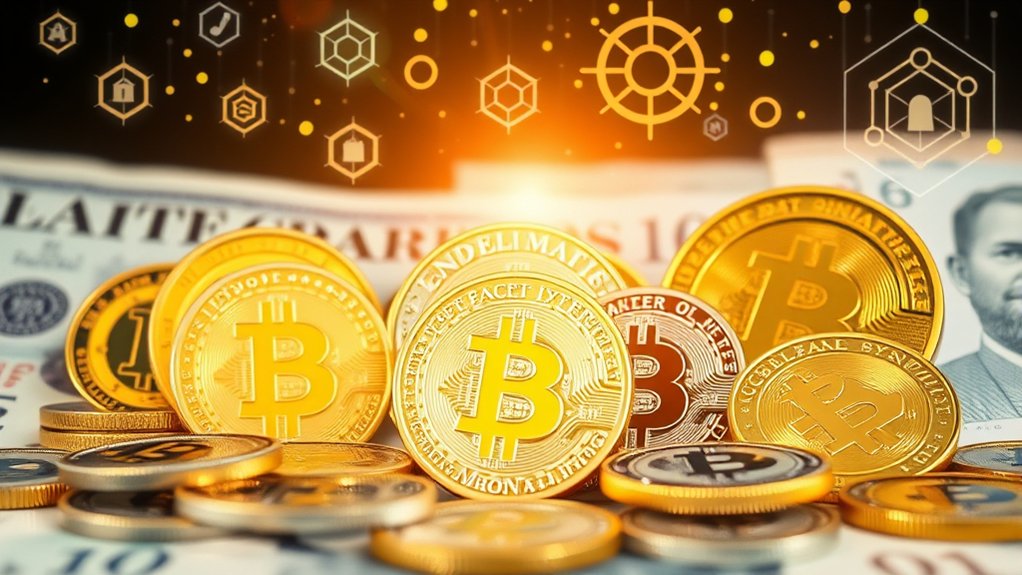Stablecoins come in four main types. Fiat-collateralized ones are backed by traditional money, like Tether. Then there are commodity-backed stablecoins pegged to physical items like gold. Crypto-backed stablecoins use other cryptocurrencies as collateral, often in the world of DeFi. Finally, algorithmic stablecoins, which operate without collateral, can crash and burn—just ask TerraUSD. Each type has its quirks and risks. Curious about all the details? There’s a lot more to unpack here.

When it comes to cryptocurrencies, the term “stablecoin” might sound like an oxymoron—after all, isn’t volatility the name of the game? Yet, here we are, talking about a special breed of digital currency that aims to keep things chill. Stablecoins are designed to maintain a stable value, usually pegged to traditional assets. Think of them as the calm center in the storm of crypto chaos.
Stablecoins are the calm amidst the crypto chaos, striving for stability in a world of volatility.
So, what types of stablecoins are out there? Well, buckle up. First up, we have fiat-collateralized stablecoins. These bad boys are tied to real-world currencies like the US Dollar or Euro. Each unit is backed by an equivalent amount of fiat currency held in reserve. Tether (USDT) and USD Coin (USDC) are the poster children here. USDC even gets regular audits to prove it’s not just smoke and mirrors. Fiat-collateralized stablecoins aim to maintain a 1:1 value ratio, providing a reliable option for those looking for stability in the volatile crypto market. This structure helps beginner users understand cryptocurrencies more easily, promoting broader adoption. They also serve as a bridge between traditional fiat currencies and the digital world, enhancing their utility.
Then, there are commodity-backed stablecoins. These are pegged to tangible assets like gold or oil. Yes, you read that right—real-life commodities! PAX Gold (PAXG) and Tether Gold (XAUT) let you own a slice of something valuable without worrying about how to store it. Pretty neat, huh? The backing by real assets helps ensure that these stablecoins maintain their value over time.
Next, we plunge into the world of crypto-backed stablecoins. These rely on other cryptocurrencies as collateral, which means they come with a bit more complexity. They’re often over-collateralized, which sounds fancy but just means they try to reduce risk. Not as mainstream as the others, but they play a role in decentralized finance (DeFi). The use of blockchain technology in these stablecoins allows for increased transparency and security.
Finally, we encounter the elusive algorithmic stablecoins. They don’t use collateral at all. Instead, they depend on algorithms and smart contracts to maintain stability. Sounds cool, right? But they can be a wild ride—just look at TerraUSD (UST) and its infamous collapse. These types of stablecoins highlight the innovative yet risky nature of the evolving cryptocurrency landscape.
In the end, stablecoins come in various flavors, each with its quirks and risks.
Frequently Asked Questions
How Do Stablecoins Differ From Traditional Cryptocurrencies?
Stablecoins and traditional cryptocurrencies are like apples and oranges.
Stablecoins are pegged to something stable, like the dollar, making them less crazy. Meanwhile, traditional cryptocurrencies, like Bitcoin, ride the wild rollercoaster of market whims. They’re volatile and unpredictable—good luck buying your coffee with that!
Stablecoins are about stability and practical use, while traditional ones are more like speculative toys.
In short, one’s reliable, the other’s a gamble. Pick your poison!
Are Stablecoins Regulated by Governments?
Yes, stablecoins are indeed regulated by governments. They’ve become too big to ignore, with a market surpassing $162 billion.
Regulators are stepping in, trying to keep things tidy. In the U.S., laws like H.R. 4766 lay down the rules. Think federal oversight mixed with state regulations.
It’s a bit of a tug-of-war. The goal? Protect consumers and maintain stability. Because let’s face it, nobody wants a crypto circus, right?
Can Stablecoins Be Used for International Transactions?
Absolutely, stablecoins can be used for international transactions.
They’re fast, like, “blink and it’s done” fast. Cheaper too—goodbye sky-high fees! Plus, they’re stable, so no wild value swings.
But wait—there are hurdles. Regulatory issues? Yep. Converting to and from fiat? A headache. And don’t forget the tech side—if the infrastructure isn’t there, good luck!
Still, for many businesses, stablecoins are shaking things up in the cross-border payment scene.
What Are the Risks Associated With Stablecoins?
Stablecoins come with a laundry list of risks. Market and liquidity issues? Check. They can crash faster than a bad sitcom.
Then there’s the pesky de-pegging risk for algorithmic types—good luck keeping that dollar value.
Cyber threats and fraud? Oh, absolutely.
And don’t forget regulatory confusion; it’s a real party pooper.
If these coins fail, the whole crypto world might just spin into chaos. Fun times ahead!
How Can I Buy Stablecoins?
Buying stablecoins isn’t rocket science.
First, choose a platform—Coinbase, Binance, or Kraken will do. Create an account. Easy peasy. Fund it with your credit card or bank transfer.
Next, pick your stablecoin. There are options, folks. Now, hit that buy button. Voila! You’re a proud owner of stablecoins.
Just don’t forget to store them securely. Because losing your coins? Yeah, that’s a classic horror story in the crypto world.





